We know how stars are formed, live and eventually perish because the sky is strewn with stars at different stages of their lives. After centuries of joining the temporal dots we now understand the evolution of stars fairly well.
You can see this process for yourself by hopscotching across the night sky with your naked eye, binoculars and telescope.
There's more info on what equipment you'll need to make the most of our stellar tour at the bottom of the article.
Start the stellar tour
Let’s begin with the youngest of stars. All stars, regardless of how hot or large they eventually grow up to be, are born in huge clouds of dust and gas called nebulae.
Our own Sun was created in one of these stellar nurseries around 4.5 billion years ago, along with other stars which have long since drifted away.
As stars grow inside nebulae – becoming denser and hotter as they collect more gas and dust – they emit light and other radiation which makes the nebula glow.
Many nebulae are visible in the night sky as hazy patches of light. The most famous is M42, the Orion Nebula, which shines in the centre of Orion’s Sword, below his more famous Belt.
The Orion Nebula

und 1,500 lightyears from Earth and over 24 lightyears across. Binoculars show M42 as a small smudge, and small telescopes reveal a feathered cloud of grey-green with several peppercorn stars at its centre, but through a large aperture scope it is a stunning sight, with arcs and curls of bright nebulosity shining behind darker lanes and billows of dust.The Trapezium – a tight cluster of four ice blue stars – glitters at its centre.
Although M42 is mag. 4, making it clearly visible to the naked eye, it was not recorded by the early astronomers. It wasn’t until 1656 that Christiaan Huygens sketched the first drawing of it.
Long exposure Hubble images of the Orion Nebula revealed around 700 young stars at the centre of M42, 150 of which are surrounded by discs of material.
The Pleiades

It’s often millions of years after their birth that young stars eventually fledge from their nebulous nests and fly free into the Universe.
On dark, moonless nights you can see many small groups of young stars scattered across the sky as if dabbed on it by a paintbrush. These are star clusters, groups of adolescent stars flying through space together like a flock of birds, bound together by gravity.
On autumn and winter nights in the Northern Hemisphere, observers can see the Pleiades, M45, the most famous star cluster in the sky.
Twinkling to the upper right of Orion at mag. 1.5, this open cluster is obvious to the naked eye as a ‘mini Big Dipper or Plough’.
Those with good eyesight can see M45’s seven brightest members, hence its nickname the Seven Sisters, although some people claim they can see as many as a dozen or more of its 500 members.
M45 lies 430 lightyears from Earth and spans around 15 lightyears. Long exposure photos show it embedded in a lacy mesh of misty blue haze.
We used to think this was material left over from the stars’ formation, but it is actually just a cloud of interstellar dust and gas that the cluster is currently passing through.
The Sun
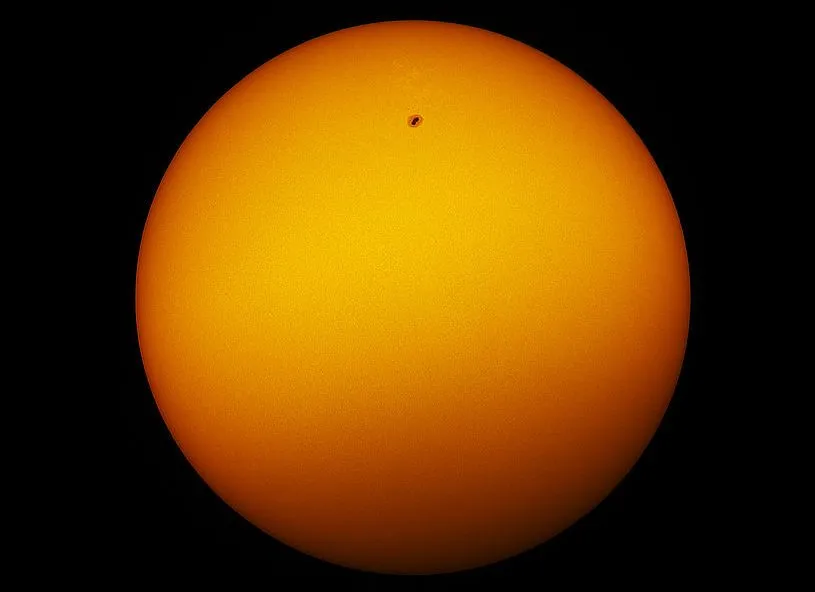
As time passes on, stars continue to age. Our own Sun is a fairly typical mature star. Born in a long-gone nebula around 4.5 billion years ago, it is now middle-aged, halfway through its 10 billion-year life.
We know that because we can look to other stars which are further along in their life cycles. By comparing our Sun with similar stars we can tell that it’s quite comfortable in a quiet part of a quiet spiral arm out near the edge of the Milky Way, not bothering anything, just steadily burning through its supply of fuel.
Physically our Sun is an enormous ball of hydrogen some 1.3 million km across, which Earth orbits at a distance of 150 million km, taking around 365 days to do so.
But even from that great distance if the Sun went out now it would be eight minutes before everything went dark. It won’t die for another five billion years though, first expanding to become a huge red giant star before blowing off its outer layers and then shrinking and cooling, ending its days as a super-dense, planet-sized white dwarf.
Pease note, you must never observe the Sun directly without proper equipment. Find out how to do so with our guide on how to safely observe the Sun.
Betelgeuse
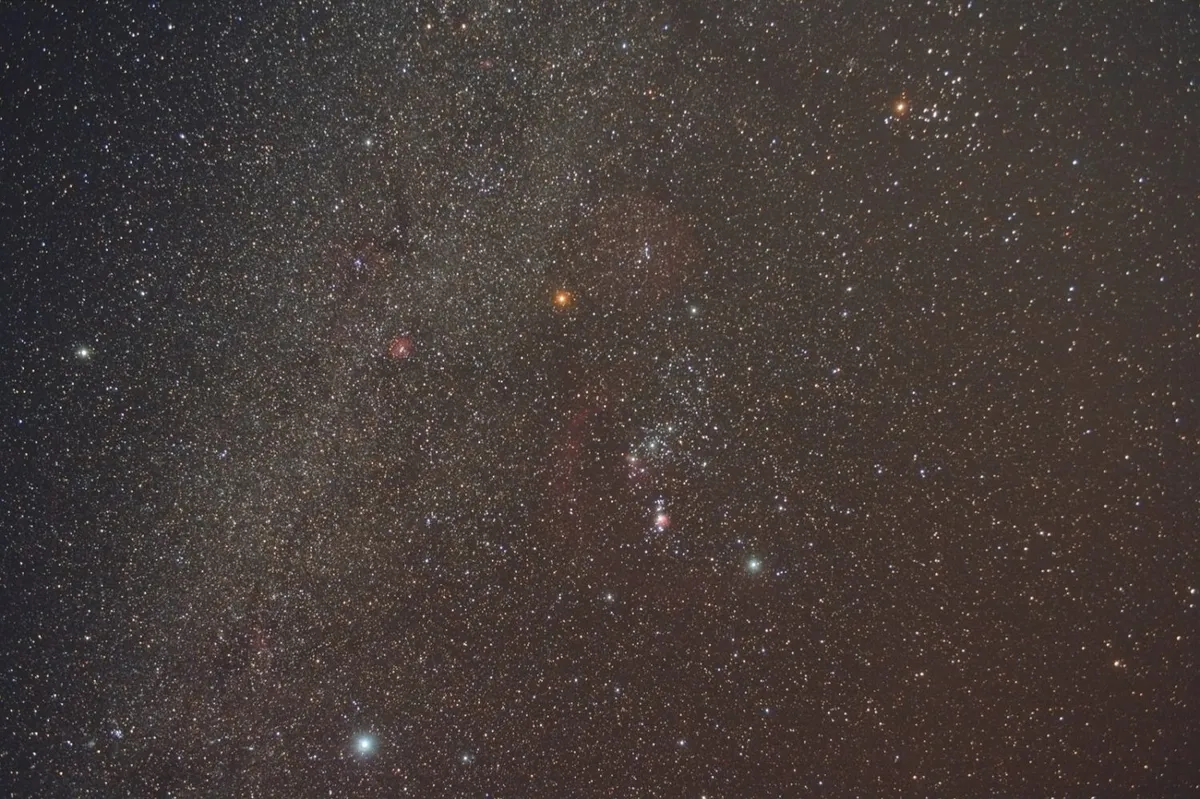
North of the Orion Nebula shines the bright orange star Betelgeuse. At mag. 0.45, it’s the secondbrightest star in Orion and ninth brightest in the whole sky.
About 650 lightyears from us, Betelgeuse is 135,000 times brighter than our Sun and so huge that, if it was put in its place, it would swallow up all the inner planets and the asteroid belt and extend to around Jupiter.
Betelgeuse is in the twilight of its years, but unlike our own Sun, which will end its days meekly, it will go out in a blaze of glory. It will blow up in a cataclysmic explosion – a supernova.
When? We don’t know. Last Christmas, when a sudden dimming of Betelgeuse saw it plummet in brightness, many excited stargazers wondered if it was about to go boom.However, the star’s brightness gradually increased and it’s now back to normal.
So Betelgeuse is safe – for now. One day it will explode and shine brighter in Earth’s night sky than the full Moon, even becoming visible in the daytime as a bright silvery spark; something to look forward to.
The Ring Nebula
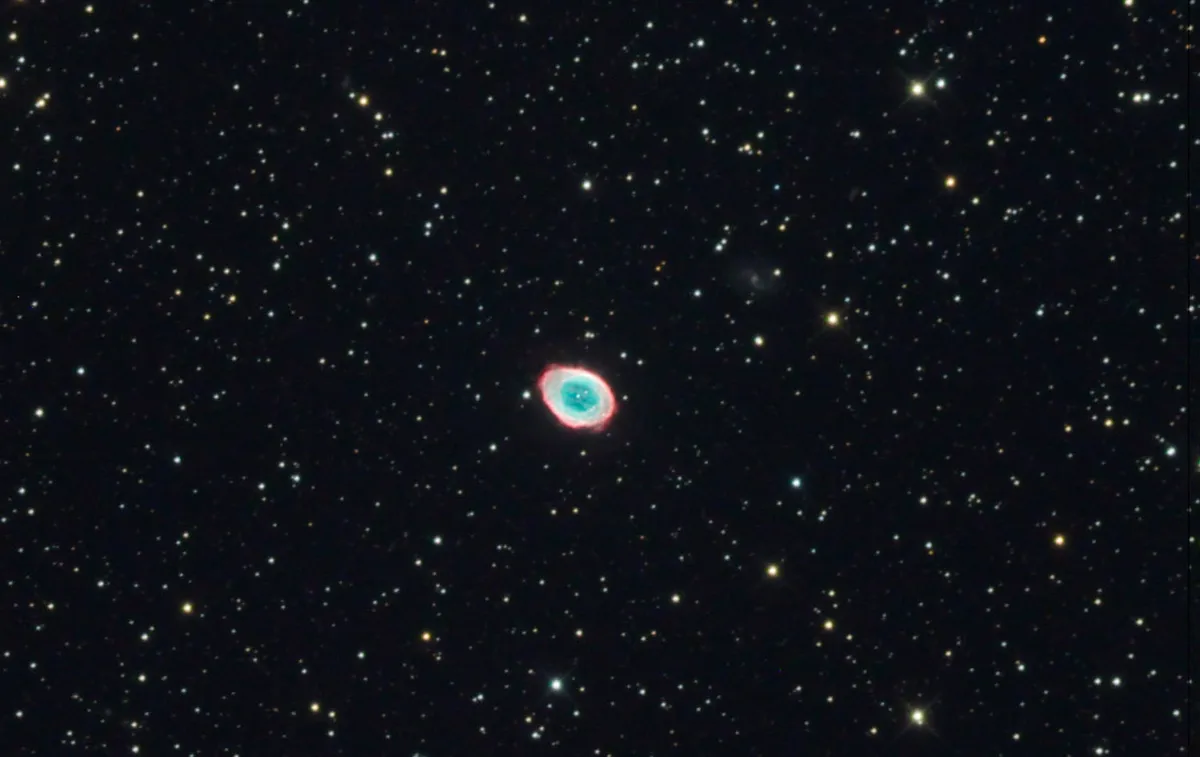
Although stars with the same mass as our own Sun don’t go through all the fuss of exploding in a supernova, they do put on a show before they die.
Instead of blowing up they throw off their outer layers in a number of puffy, mottled shells of coloured gas and dust.
Seen through a small telescope these look like smoke rings or even discs, which is why when they were first seen, centuries ago, they were mistaken for planets and indeed were named ‘planetary nebulae’ by William Herschel.
One of the best examples of a planetary nebula can be found in the constellation of Lyra (radiant of the annual Lyrid meteor shower), just south of the bright star Vega. Lying around 2,000 lightyears from Earth, M57, the Ring Nebula, was discovered in 1779 by French astronomer Antoine Darquier de Pellepoix, before it was independently spotted by Charles Messier who added it to his catalogue.
Through binoculars it appears to be a mag. 9.0 star with a faint green hue, though small telescopes will reveal it as a slightly lop-sided smoke ring, hinting at blue green.
Larger telescopes and long-exposure photos might even be able to reveal the mag. 15 dying star at its centre. It’s quite sobering to look at M57 and think that you’re looking ahead in time to the death of our own Sun.
The Crab Nebula

And so we reach the final stop on our tourist trail through the life of a star – the ghostly remains of a dead star, the Crab Nebula.
After dark on 4 July 1054, Chinese sky-watchers were fascinated and frightened to see a new star shining in the constellation of Taurus, the Bull. It quickly became so bright that it outshone every other star in the sky.
As it peaked at mag. –6.0, it was brighter than everything in the sky other than the Moon and Sun, and it was visible in the daytime for almost a month before fading away.
Centuries later, sweeping his telescope across Taurus looking for a comet in 1758, Charles Messier saw a small, misty patch nestled in the bull’s horns.
Recording its location to prevent him mistaking it for a comet ever again, he designated it ‘M1’ and started drawing up a list of equally confusing objects that would become known as the famous Messier Catalogue, several of which we’ve already heard about.
Almost a century later, when Lord Rosse observed it through his Leviathan telescope from the grounds of Birr Castle in Ireland, he nicknamed the ghostly patch of grey gas the ‘Crab Nebula’ due to its – very vague – resemblance to a crab.
To modern cameras, M1 is a complicated spray of grey-green filaments. A supernova remnant, M1 is the slowly dissipating remains of a mighty star that ended its days in a supernova over 6,000 years before the light of its destruction dazzled the wide eyes of those Chinese stargazers.
It makes a spectacular end to our tour through the lifetime of the star.
What equipment do you need for observing stars?
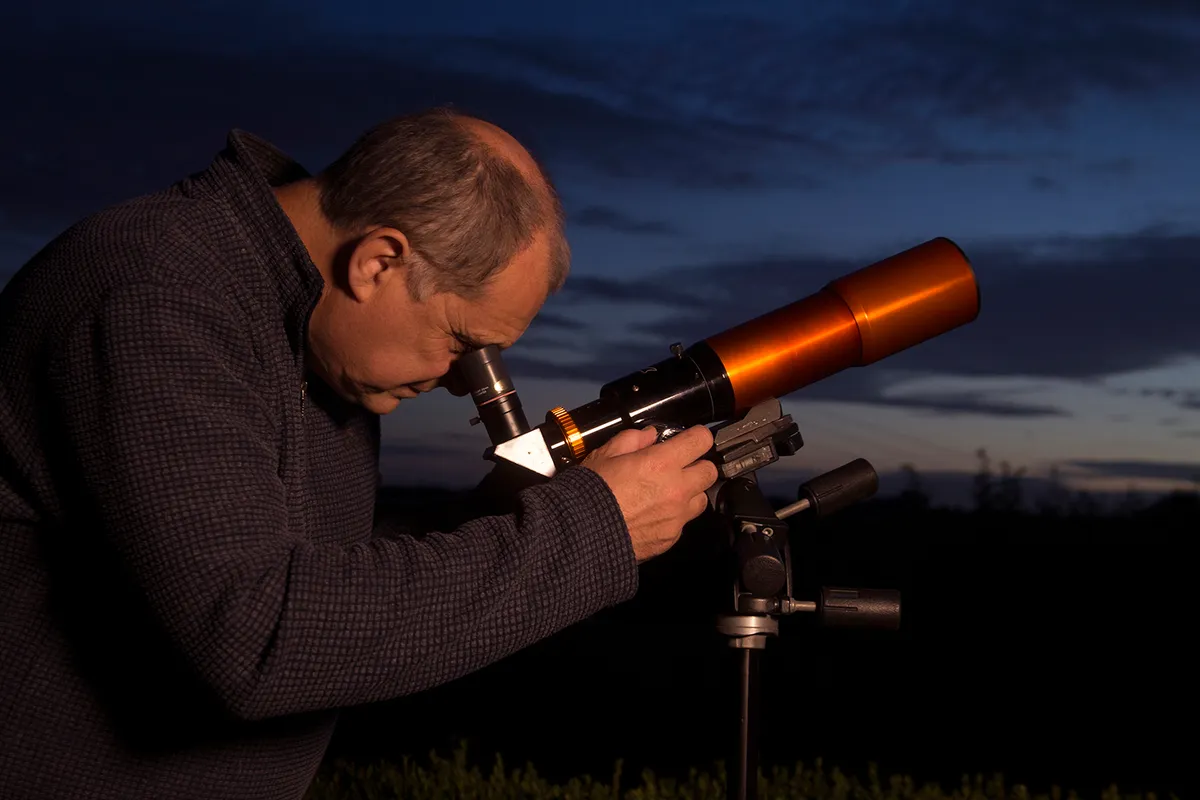
Although many of the objects featured in our guide are visible to the naked eye, you’ll need some help to see others.
A pair of 10x50 binoculars will show you the Orion Nebula as a small haze in the centre of Orion’s Sword, the Ring Nebula as an out-of-focus star just beneath icy blue Vega, and the Crab Nebula as a tiny, smoky smudge a hand’s width from garnet red Aldebaran.
A small telescope on a steady tripod will show more detail in these objects, and observing on a Moon-free night from an observing site unaffected by light pollution will improve your views even more.
How to photograph the stellar lifecycle
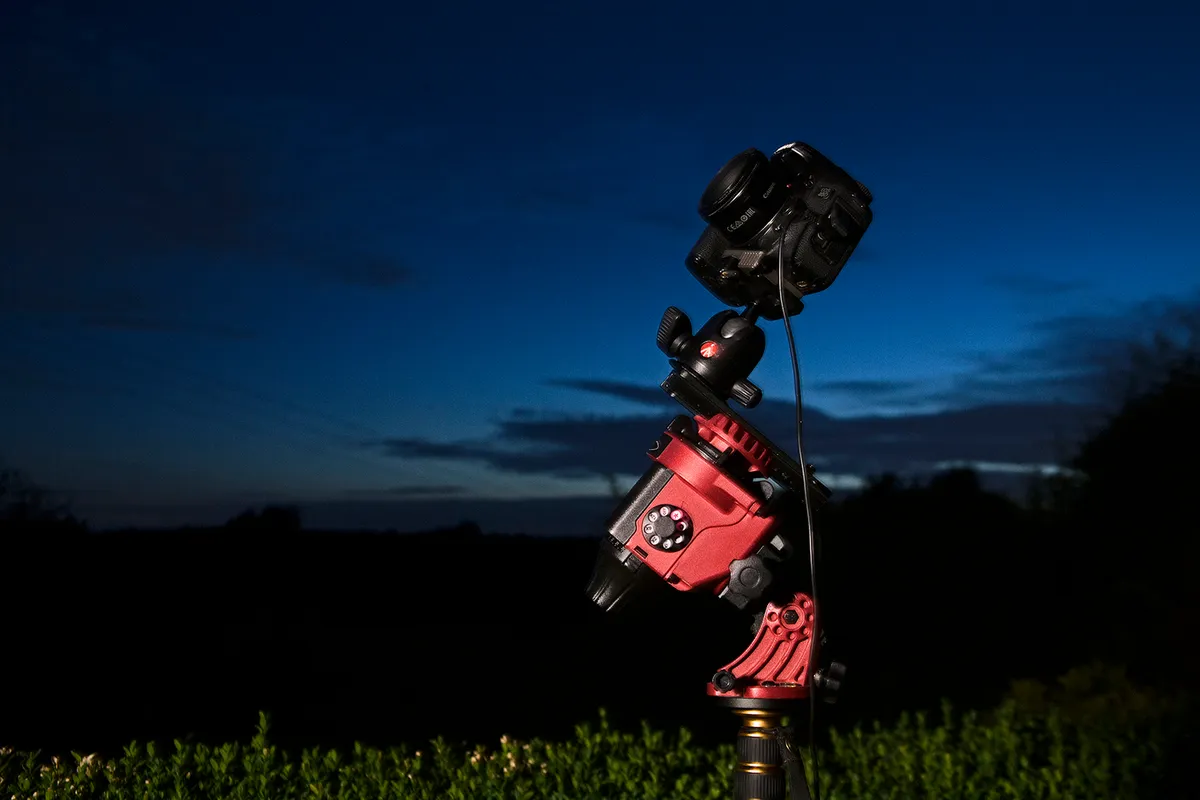
You can photograph every stage of a star’s life with a DSLR camera and no telescope is needed. To do so you’ll need to be somewhere away from light pollution, on a clear night with no Moon in the sky.
The Pleiades and Betelgeuse can be photographed with just the camera mounted on a tripod. Fitted with a standard 50mm lens, set it to take exposures of six seconds, with an ISO setting of 400 or 800.
Being smaller and fainter, the Orion, Ring and Crab Nebulae will need a longer lens. You’ll need to keep the exposures short to avoid trailing, so use a higher ISO.
To take more detailed photos, using longer exposures, you’ll need to mount your camera on a star tracker, a motorised mount that allows you to take exposures that are minutes long by following the movement of the stars across the sky.
To make the objects clearer in your photos you might need to take multiple images and stack them together using special software.
You can then process these images with different software to bring out detail and make them appear brighter and more obvious.
This article originally appeared in the September 2020 issue of BBC Sky at Night Magazine.
